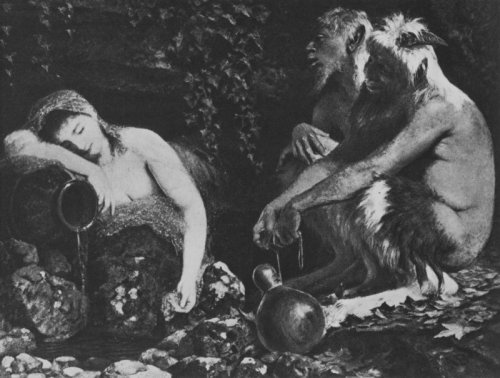1.
 Fauns and Sleeping Nymph
Fauns and Sleeping Nymph by Arnold Böcklin (1884)
(Esmu sajūsmā par viņu sejas izteiksmēm.)
2.
Nympholepsy. a frenzy supposed by ancient peoples to have been induced by nymphs
. a demonic enthusiasm held by the ancients to seize one bewitched by a nymph
. an ecstatic variety of demonic possession believed by the ancients to be inspired by nymphs
. in ancient times, a state of frenzy that was believed to seize any man who looked at a nymph
. a frenzied state of (usually erotic) emotion, especially concerning something or someone unattainable
. a state of violent emotion, esp when associated with a desire for something one cannot have
. a violent emotional state arising as from frustrated idealism
.
a wild frenzy caused by desire for an unattainable ideal. an emotional frenzy
. a frenzy of emotion
3.
♫ Seven Pines - Ombres II no dubultplates
Nympholept (tāpēc arī tas viss, ja)
Seven Pines ir lieliskā Gaë Bolg/Ērika Rodžera sānuprojekts. Nepelnīti mazpazīstams



